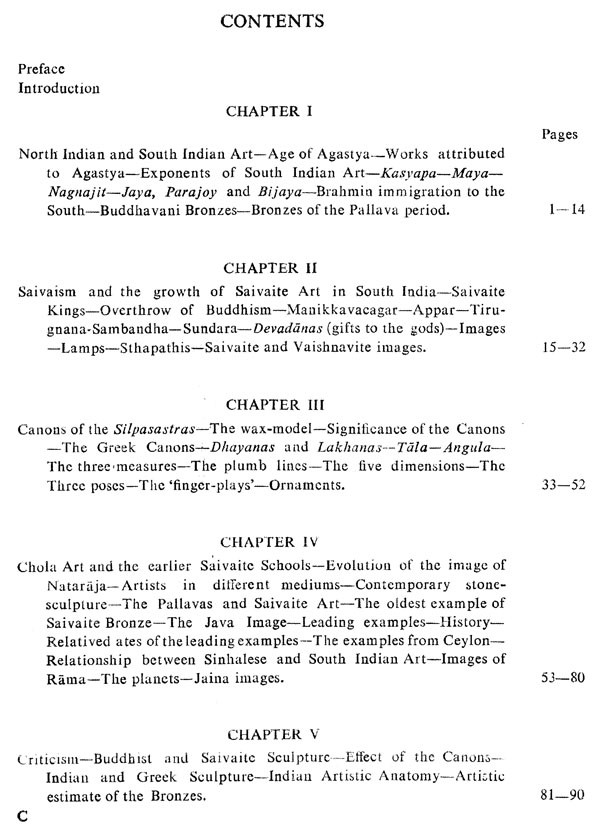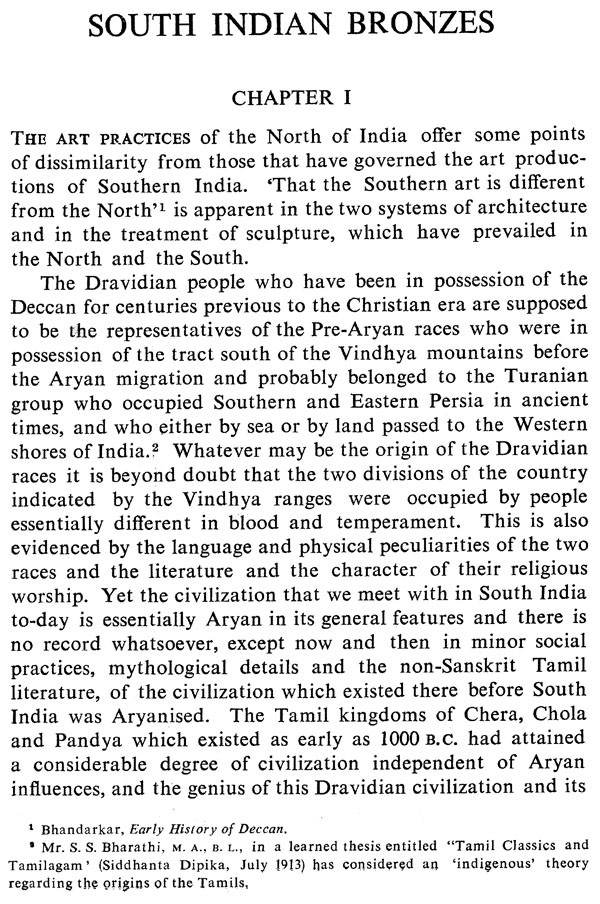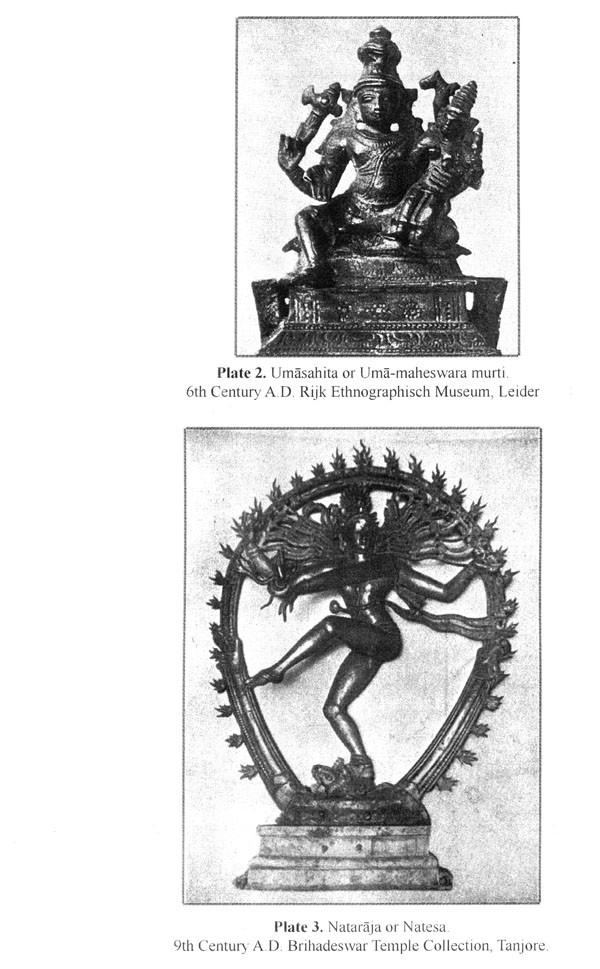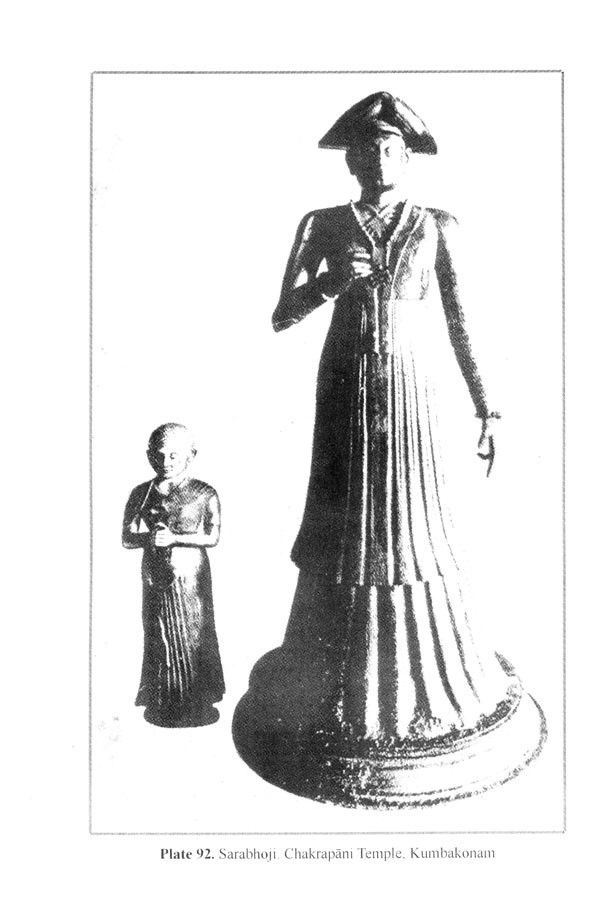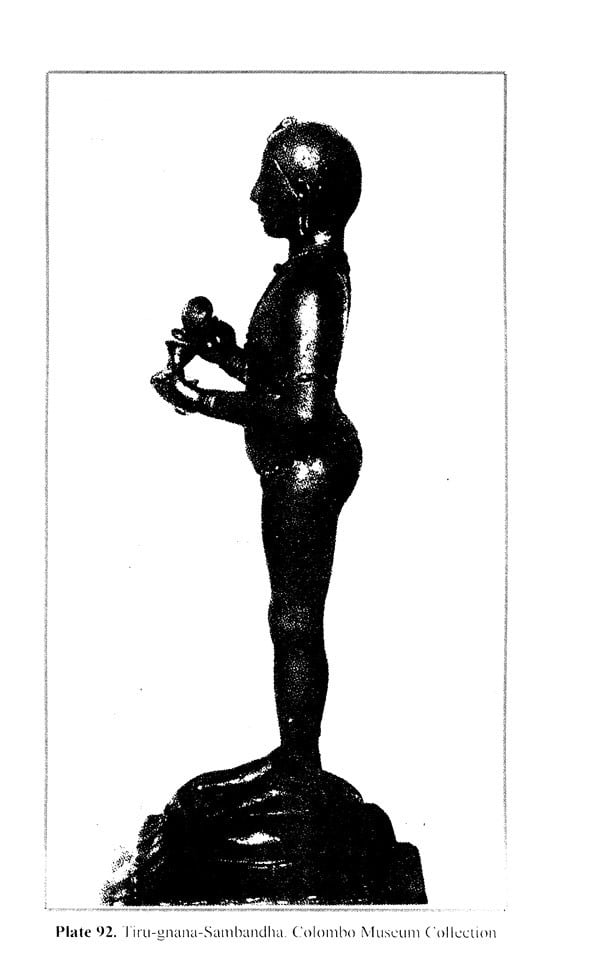
South Indian Bronzes
Book Specification
| Item Code: | NCZ020 |
| Author: | O.C. Gangoly |
| Publisher: | Shubhi Publications, Gurgaon |
| Language: | English |
| Edition: | 2013 |
| ISBN: | 9788182901551 |
| Pages: | 224 (Throughout B/w Illustrations) |
| Cover: | HARDCOVER |
| Other Details | 11.00 X 8.50 inches |
| Weight | 900 gm |
Book Description
My ignorance of the Tamil language has disqualified me from obtaining first-hand information’s on many details relating to the history of the subject. Indeed my lack of information on many important points and vital aspects of the subject has undoubtedly maimed and impaired the utility of this essay. The task which my vain efforts have failed to accomplish should have been reserved for better and competent hands. Unfortunately the modern educated South Indian to whom one looks forward to a complete and scholarly survey of the artistic treasures of their country still continues to cultivate a philistine indifference to the masterpieces of their ancestors.
A large proportion of the photographs reproduced in this volume were taken by or for me expressly for this work. To Dr. Henderson of the Government Museum, Madras, I owe a deep debt for permission to obtain photographs of some of the best specimens in that collection. To the officers of the Archeological Department, Southern circle, and principally to Mr. Lyndhurst and Mr. H. Krishna Sastri, my obligation for similar help is equally great. I am also very grateful for the help I have received in obtaining photographs from Dr. Coomaraswamy; Dr. Kern, the Director of the Muse’s Guimet, Paris; and from Messrs. Skeen & Co., Colombo. To His Excellency Lord Carmichael I am indebted for similar assistance. It is a pleasure to have to record my acknowledgments for the numerous assistance I have received from my friend and preceptor Mr. Abanindra Nath Tagore, C.I.E., but for whose encouraging incitements this work could have never been published.
To Mr. A. Govindacharya, M.R.A.S. of Bangalore, Jowe many references to Sanskrit texts and valuable suggestions. I have also to thank my esteemed friend Mr. G. Thathachari, Sub-Registrar, Koilpati, for many valuable information’s.
Specimens of old Indian sculpture have survived in ancient temples and shrines in a bewildering variety which still await systematic study.
The author who is the Honorary Secretary of our Society has himself previously touched upon the subject of "Dravidian Sculpture" I Modern Review, January 1912) and "South Indian Portrait-sculpture (Ibid, January 1915). He now follows it up with the present work in which he has collected materials for the study of South Indian Bronzes and has made for the first time a survey of this branch of the wide-spreading Indian esthetic field. His study of Shaivite sculpture is based on original sources, namely three Sanskrit manuscripts dealing with the Sculptors' canons-Kasyapiya, Agastiya and Brahmiya which are still unpublished and have not been utilised by any previous writer.
According to the plan which the author has followed in dealing with the subject-matter he has refrained from commenting on the merits of individual work, but has rather attempted to understand the conditions and the atmosphere in which these works have been produced. In the descriptive notes to the plates are appended for each icon the texts from the sculpture's handbooks which are authorities for the identification of the subject-matter of each conception. The texts have thus afforded invaluable materials for the study of South Indian iconography which is, as yet, an uninvestigated field. For, after Ziegenbalg (Genealogy of the South Indian Gods, Madras, 1869) no serious attempt has been made to surveyor study the South Indian Pantheon. The Government of Madras has instructed the Assistant Superintendent for Epigraphy to prepare a hand-book on the "Iconography of Southern India". This publication will no doubt fulfill a long- felt want. In the Annals du Muse' e Guimet, Archeology du Suddenly, Iconographies, tome II has recently been publish- ed. Mr. Gopinath Rao of Travancore is also publishing a treatise on the same subject. In the examples dealt with in the present volume are included the splendid masterpieces discovered in Polonnaruwa, Ceylon. The author is of opinion that these interesting figures must be regarded as essentially South Indian in their conception and origin and can hardly be classed with the works of Sinhalese craftsmen. On the other hand, he has excluded the pre-historic bronzes discovered at Tinnevelly as in their character and origin, they are, according to his view, unrelated to the great School of Shaivite Sculpture~ 'to which "South Indian Bronzes" as now understood specially relate, and therefore do not come within the scope of the present monograph.
It has been the fashion amongst European art-critics to decry the merits of Brahman cal Sculpture on the ground of the alleged monstrosities of the Hindu pauranic conceptions, which, it has been said, are incapable of artistic treatment. The examples collected in this volume will, it is hoped, help to dispel such misconceptions and to refute the unjust criticisms which they have engendered, and will further a juster appreciation of the fact that Indian Sculpture is not a freak of Asiatic barbarism, but is a worthy representative of a school of esthetic performance as logical, articulate and highly developed as those of any country in Europe, ancient or modern.
Book's Contents and Sample Pages Book's Contents and Sample Pages
